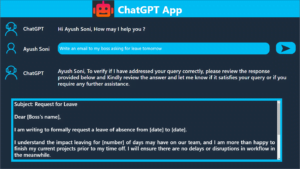
Introduction
In today’s fast-paced digital world, companies strive to deliver exceptional customer service while improving efficiency. Microsoft Virtual Agents combine artificial intelligence (AI) and chatbot technology to deliver cutting-edge solutions to meet these demands. This blog post explores the capabilities of Microsoft Virtual Agents, their benefits for businesses, and tips for effective implementation to ensure high SEO scores reach a broad audience.
Table of Contents
Section 1: Understanding Microsoft Virtual Agents
In this section, we explore the concept of virtual agents in more detail, explaining how AI and natural language processing are used to simulate human-like conversations. We focus on the features and functionality of Microsoft Virtual Agents, such as chat interfaces, pre-built features, and integration with existing systems.
Section 2: Key Benefits of Microsoft Virtual Agents
Here we outline the most important benefits that organizations can gain by adopting Microsoft Virtual Agents. We discuss how virtual agents can enhance customer experience through instant support, personalized communication and round-the-clock availability. In addition, we examine how virtual agents contribute to productivity through automation, cost reduction, and productivity improvements.
Section 3: Implementing Microsoft Virtual Agents
In this section, we provide practical insights and techniques for successfully using Microsoft Virtual Agents. We cover the steps of creating and training virtual agents, choosing the right chat format, and integrating with popular platforms and websites like Microsoft Teams We emphasize the importance of continuous monitoring and improvement to be productive emphasize.
Section 4: Use Cases and Real-world Examples
To demonstrate the versatility and functionality of Microsoft Virtual Agents, we present a variety of applications in different industries. We show how virtual agents are revolutionizing customer support, lead generation, appointment scheduling, and more. Real-world examples and success stories highlight the tangible benefits that organizations have gained by implementing virtual agents.
Section 5: Best Practices and Tips for Success
In the fifth section, we share best practices and actionable tips for maximizing the impact of Microsoft Virtual Agents. We cover topics such as designing engaging conversational flows, personalizing interactions, measuring performance metrics, and continuously refining virtual agents based on user feedback. These insights ensure the successful deployment and ongoing optimization of virtual agents.
Section 6: Integrating Microsoft Virtual Agents with Microsoft Power Platform
In this section, we explore seamless integration between Microsoft Virtual Agents and the Microsoft Power Platform. We’ll discuss how organizations can leverage Power Platform’s low-code development capabilities to extend the functionality of virtual agents. We highlight the benefits of integrating virtual agents with Power Apps, Power Automate, and Power BI, enabling businesses to create end-to-end automation solutions and gain deeper insights from customer interactions
Section 7: Security and Compliance Considerations for Microsoft Virtual Agents
Safety and compliance are important aspects of any technology implementation. In this section, we focus on Microsoft Virtual Agents security policies and compliance features. We also cover data privacy, encryption, access control, and compliance certification, such as GDPR and HIPAA. By addressing these considerations, organizations can ensure the confidentiality, integrity, and availability of customer information while ensuring compliance.
Section 8: Use Cases and Industry Applications of Microsoft Virtual Agents
In this section, we examine various Microsoft Virtual Agents applications and industry applications. We show how organizations across a range of industries, including customer service, healthcare, e-commerce and finance, are using virtual agents to enhance customer experience, automate processes and drive business efficiencies successful. By exploring real-world examples, readers can gain insight into the effective use of virtual agents and see how they can be used for their own projects
Section 9: Best Practices for Implementing Microsoft Virtual Agents
Successful implementation of a virtual agent requires careful planning and management. In this section, we share best practices for using Microsoft Virtual Agents. We discuss concepts such as defining clear goals and objectives, designing conversation flows, personalizing experiences, managing performance, and continuously improving the performance of the virtual agent. By following these best practices, organizations can maximize the benefits of a virtual agent and ensure a successful implementation that delivers value to customers and the business.
Section 10: Integrating Microsoft Virtual Agents with Existing Systems and Tools
The main advantage of Microsoft Virtual Agents is the ability to integrate with existing systems and tools. In this section, we explore the integration capabilities of virtual agents and discuss how organizations can use their virtual agents to connect CRM systems, help desk platforms, knowledge bases, and other existing business applications Virtual agents and systems Through integration with it, businesses can deliver a seamless and personalized experience to their customers, leveraging the data and resources in their ecosystem.
Section 11: Security and Compliance Considerations for Microsoft Virtual Agents
Security and compliance are paramount when using a virtual agent. In this section, we explore the security and compliance considerations that organizations must address when using Microsoft Virtual Agents. We cover things like data encryption, access control, user authentication, and complying with data security laws. By adhering to these best practices, companies can remain in compliance with industry-specific regulations to ensure the privacy and security of customer information.
Section 12: Future Trends and Innovations in Microsoft Virtual Agents
The virtual agents industry is constantly evolving, and new trends and innovations are shaping its future. In this section, we explore emerging features and new features in Microsoft Virtual Agents. We discuss advances in natural language processing, machine learning, and AI technologies that enhance the capabilities of virtual agents. In addition, we highlight possible future developments, such as voice-enabled virtual agents, multilingual support, integration of emerging technologies such as augmented reality and virtual reality and understanding these developments can help organizations to stay ahead of the curve with virtual agents in their business strategies You can leverage all available capabilities.
Conclusion
Microsoft Virtual Agents have emerged as a game changer in terms of customer service and efficiency. Using AI-powered chatbot technology, businesses can enhance customer experience, automate systems and gain visibility. With a comprehensive understanding of Microsoft Virtual Agents, their benefits, deployment methods and best practices, organizations can leverage their capabilities to stay ahead of the digital landscape.



